Unveiling the Power of Allegro Cadence: A Comprehensive Guide
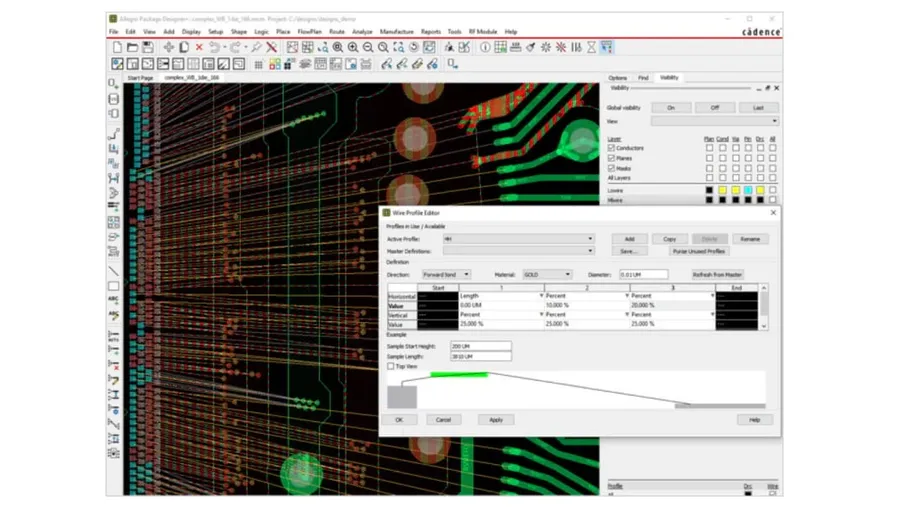
In the intricate dance of modern electronics, Allegro Cadence emerges as a maestro, orchestrating the symphony of PCB design. Much like a skilled composer arranging notes, Allegro Cadence empowers engineers to create, analyze, and refine complex circuit boards with precision and efficiency. This article delves into the world of Allegro Cadence, examining its features, benefits, and how it shapes the landscape of electronic design.
What is Allegro Cadence?

Allegro Cadence, often referred to simply as Allegro, is a high-performance PCB design software suite developed by Cadence Design Systems. It serves as a cornerstone in the electronics industry, providing comprehensive solutions for both schematic capture and PCB layout. Its robust features and capabilities empower engineers to design intricate printed circuit boards for a wide array of electronic devices.
At its core, Allegro facilitates the transformation of conceptual circuit designs into physical implementations. This process starts with schematic capture, where engineers create logical representations of electronic circuits using graphical symbols. Following this, Allegro's PCB layout tools enable the arrangement of components, the routing of electrical connections, and the incorporation of design constraints. Allegro supports complex design requirements and ensures efficient design workflow, thus contributing significantly to the production of high-quality electronic products.
The Allegro X Design Platform: An Overview
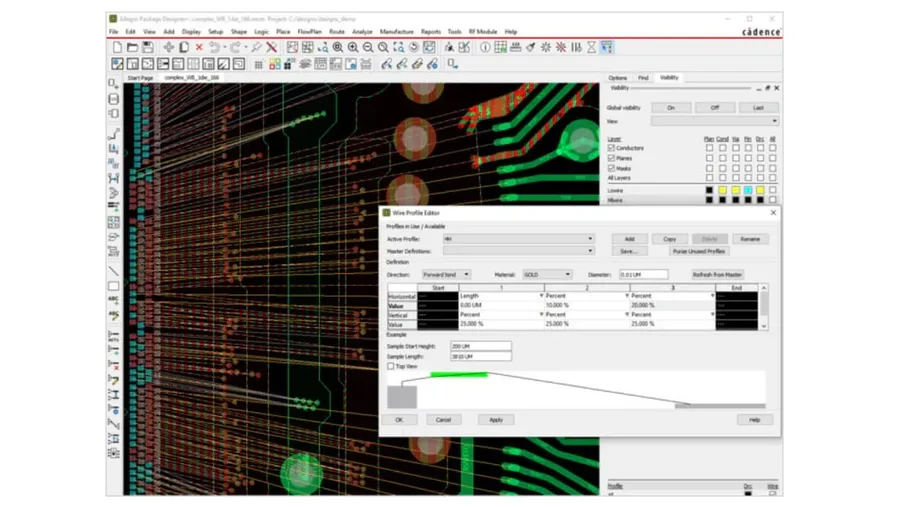
The Allegro X Design Platform represents a significant advancement in PCB design, offering an integrated environment that seamlessly connects various stages of the electronic design process. It is engineered to handle the complexities of modern electronic systems, integrating schematic design, layout, electromagnetic (EM) analysis, and thermal system simulation into a unified platform, thereby streamlining workflows and enhancing collaboration among design teams.
The platform's architecture facilitates a concurrent engineering approach, allowing engineers to work collaboratively on different aspects of the design simultaneously, reducing design cycle time and minimizing the risk of errors. The platform's integrated nature ensures that design changes made in one domain are automatically reflected in others, maintaining design integrity and accelerating the verification process.
- Schematic Design
Provides a comprehensive suite of tools for creating and managing electronic schematics, including advanced component management, hierarchical designs, and real-time error checking. - PCB Layout
Features powerful layout capabilities with sophisticated routing algorithms, design rule checking (DRC), and advanced placement options to ensure accurate and efficient board design. - Electromagnetic Analysis
Enables simulation and analysis of electromagnetic behavior, predicting signal integrity issues, and optimizing signal performance, ensuring reliable and robust operation of high-speed digital circuits. - Thermal System Simulation
Offers thermal analysis tools to evaluate and manage heat dissipation, preventing thermal overload and component failure, a critical consideration for high-power electronics. - Integration and Collaboration
The platform promotes seamless integration among various design tools and databases, as well as provides tools to facilitate design sharing, collaborative design reviews, and real-time updates among design teams.
Key Features of Allegro PCB Designer
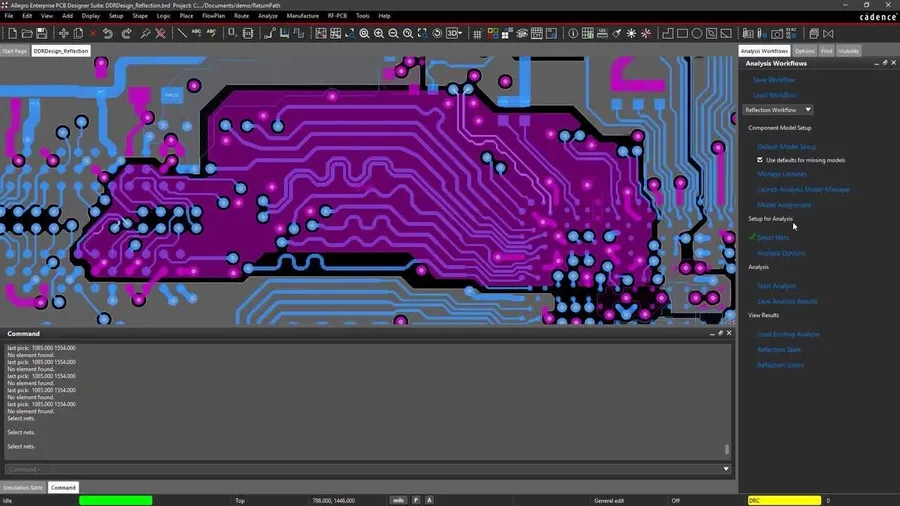
Allegro PCB Designer is a robust software suite offering a comprehensive set of tools for printed circuit board (PCB) design, emphasizing advanced routing capabilities and rigorous design rule checks to meet the demanding requirements of modern electronic designs. Its capabilities extend from basic schematic capture to advanced physical layout, ensuring both efficiency and precision in the design process.
- Advanced Routing Technologies
Allegro PCB Designer incorporates sophisticated routing algorithms that handle complex layouts, including high-density interconnect (HDI) designs, and provides tools for interactive and automatic routing to optimize signal integrity and performance. - Comprehensive Design Rule Checks (DRC)
The software features a detailed DRC system that verifies the design against user-defined constraints and industry standards, preventing potential manufacturing issues and ensuring design reliability. - Constraint-Driven Design
Allegro's constraint management system allows for the specification of physical and electrical requirements, which are then enforced throughout the design process, ensuring that the design meets performance criteria. - Hierarchical Design
The software supports hierarchical design methodologies allowing designers to manage complex layouts by breaking them down into logical blocks, simplifying design management and enhancing reusability of components. - Signal Integrity Analysis
Integration with signal integrity analysis tools allows designers to simulate and analyze signal behavior, identifying potential issues such as reflections, crosstalk, and impedance mismatches early in the design phase. - 3D Visualization
Allegro PCB Designer includes 3D visualization features that assist in understanding the mechanical aspects of the design, checking for fit issues, and optimizing component placement.
Allegro vs. OrCAD: A Comparative Analysis
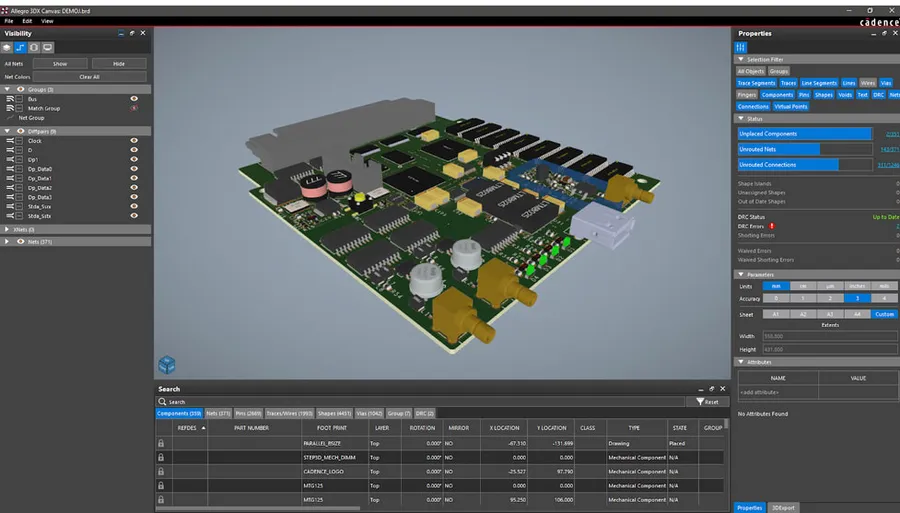
Allegro and OrCAD, both prominent PCB design software suites from Cadence Design Systems, cater to diverse electronic design needs. While sharing a common origin and some feature overlap, they diverge significantly in their focus, capabilities, and target applications. A detailed comparison is essential for designers to select the most appropriate tool for their specific project requirements.
| Feature | Allegro | OrCAD |
|---|---|---|
| Target Application | High-speed, high-density PCB design; complex multi-layer boards; advanced packaging | General-purpose PCB design; mid-range complexity; cost-sensitive applications; analog/mixed-signal design |
| Routing Capabilities | Advanced routing algorithms; robust constraint management; powerful interactive routing and auto-routing; hierarchical routing | Standard routing features; sufficient constraint management for less complex designs; adequate auto-routing capabilities |
| Analysis & Simulation | Extensive integration with signal integrity, power integrity, and thermal analysis tools; advanced EM simulation | Signal integrity analysis; limited power integrity analysis |
| Scalability | Highly scalable for large, complex designs and team collaboration; suited for enterprise-level environments | Scales well for medium-sized projects; more focused on single-user or smaller team projects |
| User Interface | Highly customizable, but may have a steeper learning curve for beginners | More intuitive user interface and easier to learn and implement |
| Cost | Higher price point reflecting advanced capabilities and enterprise-level features | More affordable pricing; suitable for individuals and smaller businesses |
| Industry Focus | Aerospace, defense, high-performance computing, telecommunications, complex consumer electronics | Industrial controls, automotive, consumer electronics, general electronics |
| Constraint Management | Sophisticated constraint management capabilities; handles complex and numerous design constraints with ease | Adequate constraint management; suitable for less complex design scenarios |
| Database Structure | Robust and extensive database; supports complex library management | Simplified database structure; easier to manage for less complex projects |
Frequently Asked Questions About Allegro Cadence
This section addresses common questions and clarifies any misconceptions surrounding Allegro Cadence, a leading PCB design software. We aim to provide concise, accurate answers to help users understand the software and its capabilities.
- Is Allegro part of Cadence?
Yes, Allegro is a key component of the Cadence suite of electronic design automation (EDA) software. Cadence is the parent company, and Allegro is one of its flagship PCB design products. - Is Cadence Allegro free?
No, Cadence Allegro is not free. It is a professional-grade software suite that requires a commercial license for full functionality. However, Cadence does offer a free viewer for design review, which will be covered in another section. - How much does Cadence Allegro cost?
The cost of Cadence Allegro varies depending on the specific modules, the number of users, and the license type (e.g., perpetual, subscription). It is best to contact Cadence sales directly for a precise quote tailored to your organization's requirements, as pricing information is not publicly listed and is subject to change. - What is the difference between Allegro and Allegro X?
Allegro X is the newer platform that encompasses Allegro PCB Designer and other tools, offering a more integrated design environment and enhanced capabilities for design, simulation, and analysis. While the core PCB layout functionality remains similar, Allegro X provides advancements in usability, collaboration, and the ability to integrate with other Cadence tools. Think of Allegro as the core PCB design software and Allegro X as the modern, integrated platform that includes Allegro. - What are the key capabilities of Allegro PCB Designer?
Allegro PCB Designer is known for its robust capabilities in schematic capture, PCB layout, routing, and design rule checking. It provides advanced features for high-speed design, signal integrity analysis, and comprehensive documentation output. - Can I use Allegro for both simple and complex PCB designs?
Yes, Allegro is highly scalable and can be used for a wide variety of PCB designs, from simple single-layer boards to very complex, multilayer high-density interconnect (HDI) boards. Its flexibility and comprehensive feature set make it suitable for a diverse range of applications. - Is there a trial version available for Allegro?
Cadence may offer a trial version of Allegro for evaluation purposes to new users. This is typically for a limited period and requires a specific process to obtain. The best way to ascertain the availability of a trial is to contact Cadence sales or check their official website for the most current information.
Getting Started with Allegro Cadence: Resources and Tutorials

Embarking on your journey with Allegro Cadence begins with accessing the right learning resources. This section provides guidance on where to find comprehensive tutorials, training materials, and other vital resources that will enable you to quickly become proficient in using Allegro Cadence for your PCB design needs.
- Official Cadence Learning Resources
Cadence provides a wealth of official resources including documentation, training courses, and online support portals. These materials are crafted by the software developers and offer the most accurate and up-to-date information. - Online Training Platforms
Explore platforms like Coursera, Udemy, and edX that offer specialized courses on Allegro Cadence from industry experts and experienced users. These platforms offer structured learning paths suitable for various skill levels. - Cadence Community Forums
Engage with the user community on Cadence forums. This allows you to ask questions, share experiences, and learn from the insights of other Allegro users. Forums often contain solutions to common problems and can offer alternative perspectives on design challenges. - YouTube Tutorials
Many experienced users and educators provide free tutorials on YouTube covering a wide range of Allegro Cadence topics, from basic navigation to advanced routing techniques. These videos often offer practical, visual demonstrations of the software’s features. - Books and Publications
While digital resources are readily available, there are several professional books and publications on PCB design that include specific chapters or case studies on Allegro. These provide a more in-depth theoretical grounding, which is highly advantageous for advanced users. - University and College Programs
Several universities and colleges offer courses or modules using Allegro in the electronic engineering or PCB design curriculum. These options are suitable for students or individuals looking for a formal, academic approach to learning. - Local Training Centers and Workshops
Local training centers and workshops, often partnered with Cadence, offer hands-on instruction in person or remotely. These usually provide intensive courses that immerse users in practical scenarios.
Advanced Routing Techniques in Allegro Cadence
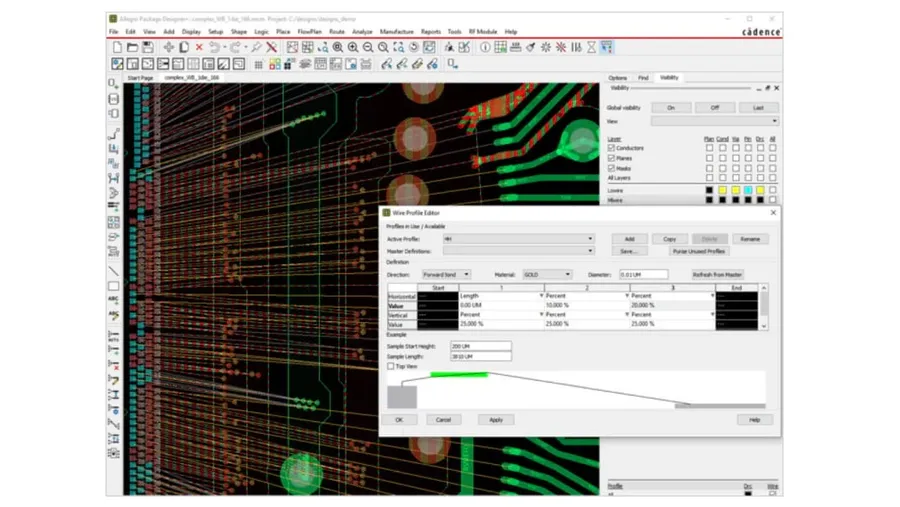
Allegro Cadence offers a suite of advanced routing techniques crucial for optimizing PCB designs, going beyond basic connections to improve signal integrity, reduce manufacturing costs, and enhance overall product performance. These techniques leverage powerful algorithms and AI to address the complexities of modern electronic designs.
- Differential Pair Routing
This technique involves routing two traces with equal length and spacing to carry differential signals, minimizing noise and ensuring signal integrity for high-speed applications. Allegro provides real-time constraints and interactive adjustment tools for precise control over differential pair routing. - Controlled Impedance Routing
Managing trace impedance is essential for high-speed signal transmission. Allegro allows designers to define impedance requirements and provides visual and real-time feedback as well as simulation tools to maintain consistent impedance along the route based on defined layer stack-ups and material properties. This feature is critical for ensuring signal fidelity and performance. - Length and Delay Tuning
Precise control over trace lengths and signal delays is critical in high-speed design. Allegro offers various tuning techniques, such as meanders and trombone structures, which allow designers to match trace lengths effectively and ensure synchronous arrival of signals to improve system performance and avoid timing issues. - Blind and Buried Via Routing
Blind and buried vias allow for complex multilayer PCB designs by creating connections between specific layers, improving design density and reducing signal path length. Allegro allows fine-tuned routing strategies that accommodate these specialized vias. - High-Density Interconnect (HDI) Routing
HDI routing requires advanced routing techniques due to smaller traces and tighter spacing. Allegro provides capabilities for microvia design, advanced routing algorithms, and design rule checks specific to HDI requirements, enabling designers to create compact and complex PCBs with excellent electrical performance. - AI-Powered Routing Assistance
Allegro integrates AI-driven features that help to automate routing tasks by predicting optimal routes based on design rules and constraints. This reduces routing time, improves consistency, and assists with design exploration. AI can also assist in identifying potential design issues early in the process.
The Role of Allegro Cadence in Modern Electronic System Design
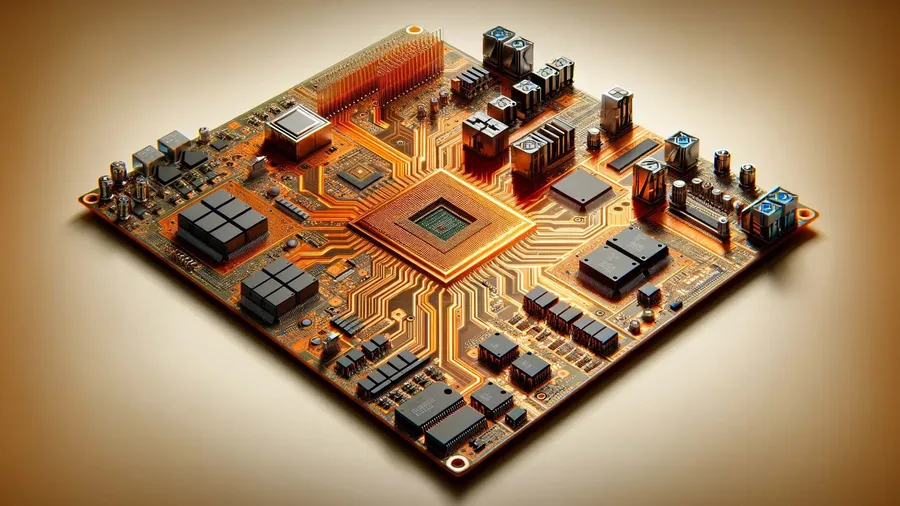
Allegro Cadence is pivotal in modern electronic system design, serving as a cornerstone for developing sophisticated and reliable electronic products. Its capabilities extend beyond basic PCB layout, encompassing critical aspects of collaboration and design accuracy.
The complexity of modern electronics demands tools that facilitate seamless teamwork and uphold design integrity throughout the product development lifecycle. Allegro Cadence addresses these demands with its robust feature set and capabilities.
- Enhanced Collaboration
Allegro Cadence facilitates collaboration among geographically distributed teams through its comprehensive data management and sharing features. This ensures that all stakeholders have access to the most up-to-date design information, minimizing errors and streamlining the design process. - Ensuring Design Accuracy
The platform’s advanced design rule checking (DRC) capabilities and simulation tools are critical for ensuring that electronic designs adhere to stringent industry standards and performance requirements. These tools enable designers to identify and resolve potential issues early in the design cycle, significantly reducing the likelihood of costly redesigns. - Complex System Integration
Modern electronic systems are often characterized by complex integration of digital, analog, and RF components. Allegro Cadence provides the tools necessary to manage this complexity effectively, enabling designers to integrate diverse elements seamlessly into a unified system. - Shortened Development Times
By streamlining the design process, facilitating collaboration, and ensuring accuracy, Allegro Cadence helps accelerate the overall development timeline for new electronic products, enabling companies to bring their products to market faster.
Allegro Cadence Free Viewer
The Allegro X Free Viewer is a crucial tool for stakeholders who need to review and interact with PCB designs created in Cadence Allegro, without requiring a full Allegro license. This viewer facilitates seamless design sharing, collaboration, and review processes across different teams and departments.
The Allegro X Free Viewer allows users to view intricate details of PCB designs including layout, components, and routing paths, without the ability to edit the design. It's particularly useful for project managers, manufacturing engineers, and external collaborators who need to analyze the PCB design without the overhead of the full CAD software license. This promotes a collaborative environment and keeps all stakeholders informed at each step of development. Furthermore, it aids in identifying potential design flaws early and helps in optimizing the PCB for best performance and manufacturability.
- Design Visualization
Offers a comprehensive view of the PCB layout, including component placement, routing, and layer stack-up. Users can pan, zoom, and rotate the design to examine specific areas in detail. The viewer maintains high fidelity to the original design, enabling a reliable and thorough review. - Cross-Probing Functionality
The viewer includes cross-probing features, enabling users to select a component or net in the schematic, and it will be highlighted on the PCB layout, and vice versa. This functionality supports a better understanding of the interrelation between schematic and layout design and aids in design analysis and debug. - Design Review and Feedback
The free viewer supports mark-up and commenting features, allowing users to insert annotations, highlight specific elements, and leave comments directly on the design file. This enhances communication among project stakeholders and ensures feedback is effectively conveyed and addressed during the design review. - File Support
The Allegro Free Viewer supports the primary design file formats produced by the full Allegro suite, making it easy to review designs without the need for file conversions. Design files from different versions of Allegro can also be reviewed with full accuracy and detail, ensuring consistency across teams. - Accessibility and Cost-Effectiveness
The primary benefit of the free viewer is its accessibility and lack of licensing costs. This allows all interested parties involved in a project to access the PCB design, irrespective of whether they have an Allegro license or not. This ensures that everyone is on the same page regarding the PCB design, from concept to manufacturing.
From the initial spark of an idea to the intricate layout of a PCB, Allegro Cadence serves as an indispensable ally for engineers navigating the complexities of electronic design. Its robust feature set, collaborative environment, and continuous evolution make it a cornerstone of the industry. Like a conductor leading an orchestra, Allegro Cadence ensures that every element of the design process harmonizes to create innovative and reliable electronic solutions. Embracing the power of Allegro Cadence opens up a world of possibilities in the realm of electronic design and engineering innovation. Future developments in AI and integration will continue to enhance Allegro Cadence's value and impact.
 AnyPCBA
AnyPCBA